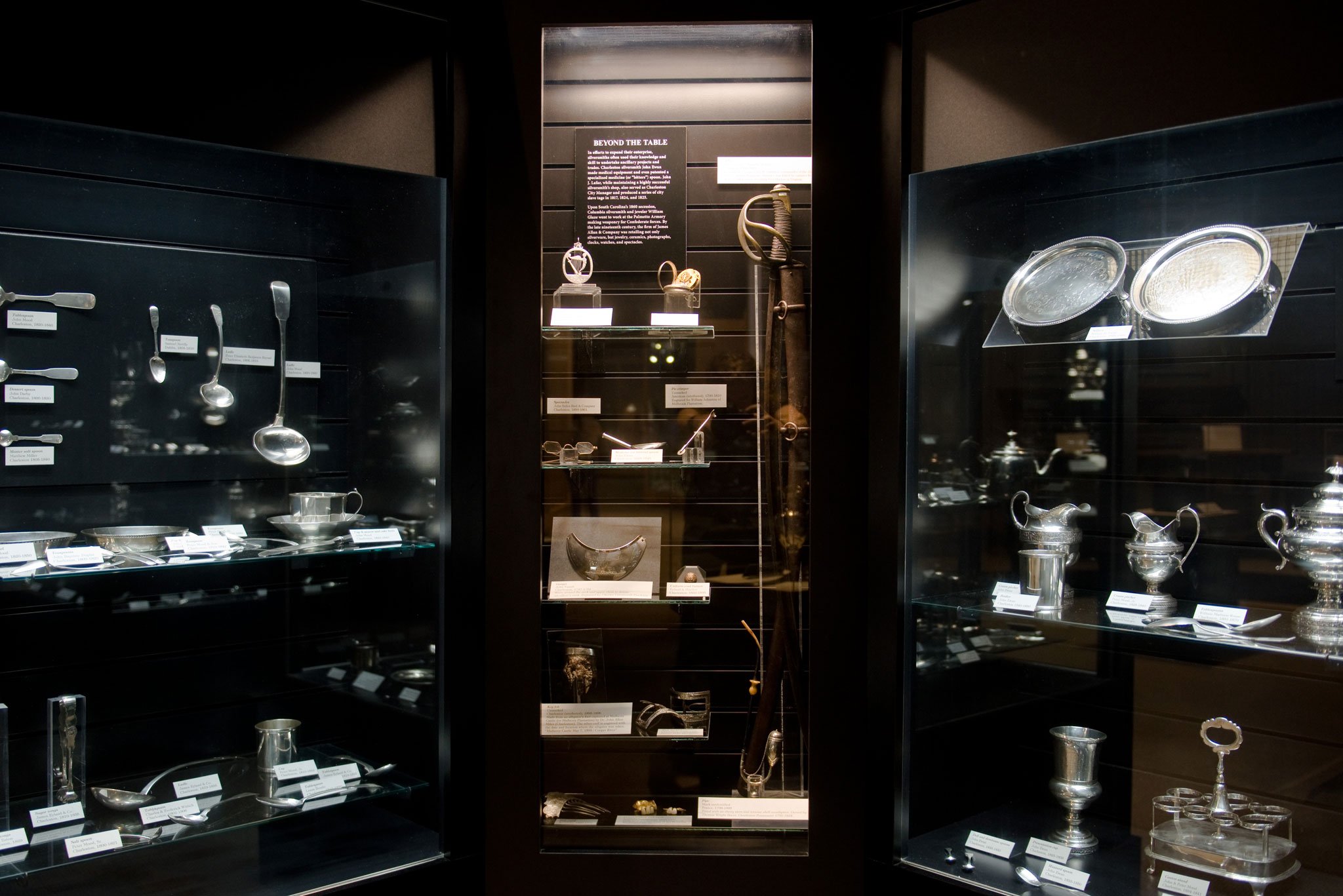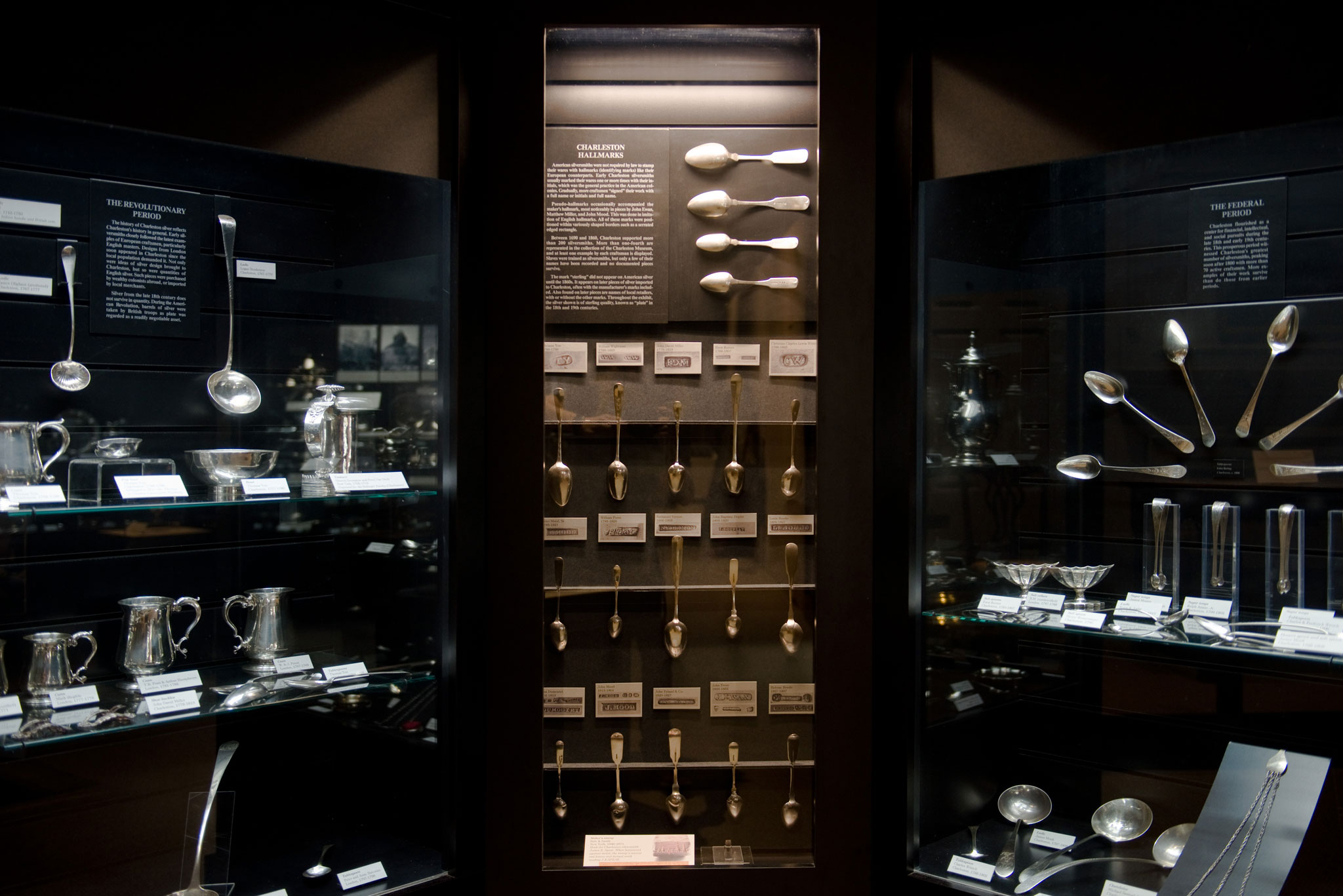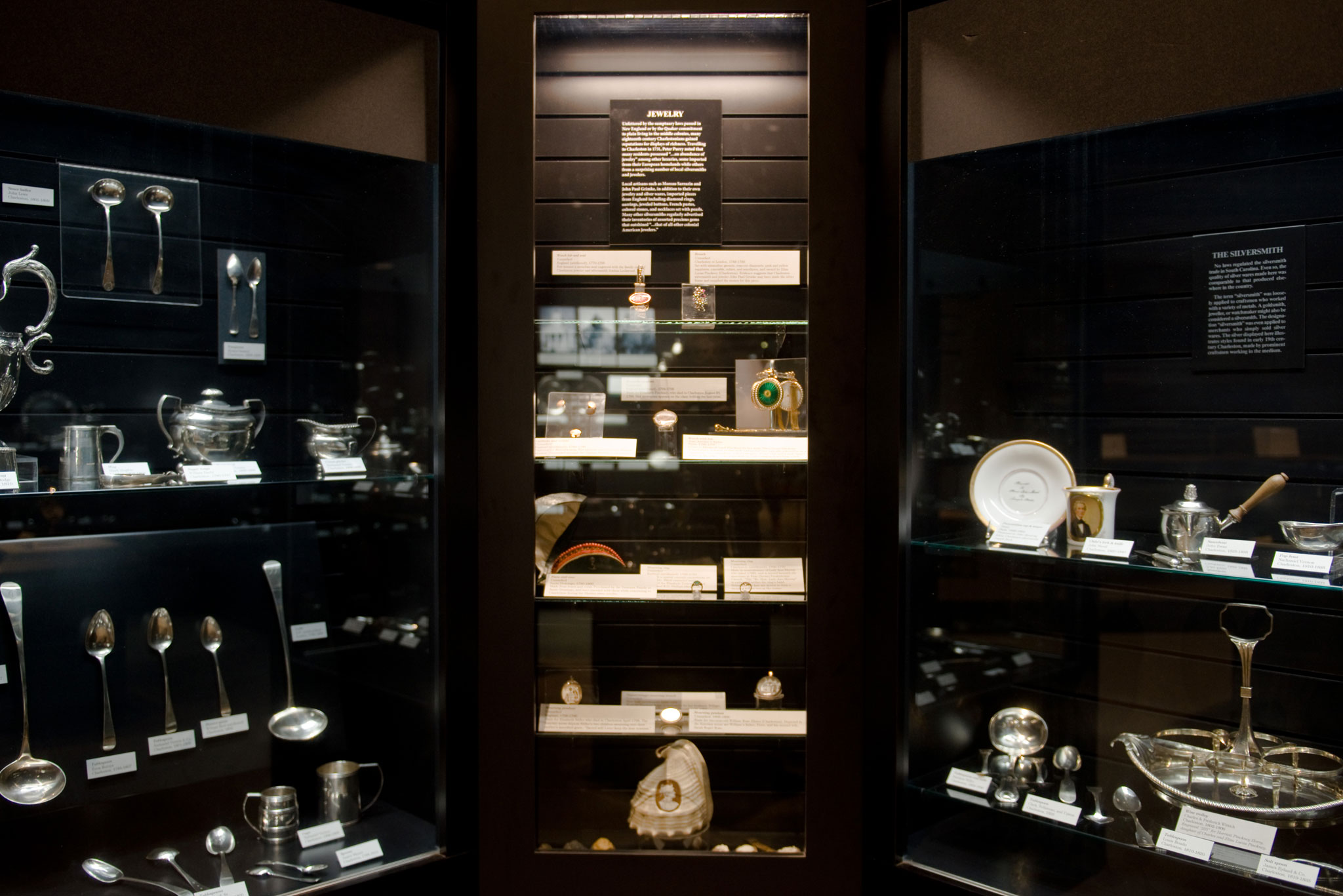More Cases for Silver’s Graces!
This past August, Andrew Steever of Charleston’s own Squarepoint Design, and former designer and project manager for Technical Theater Solutions responsible for The Charleston Museum’s Kidstory and the Historic Textiles Gallery, was here again with associate Aaron Ferrari, this time installing new casework crafted specifically for the Loeblein Gallery of Charleston Silver. Visitors can now enjoy an expanded presentation of historic silver and jewelry with the addition of three new display cases integrated within the existing space. Not only does this additional casework complete a key objective from The Charleston Museum’s Strategic Plan, it furthermore allows the addition of even more elegant artifacts to this already internationally renowned gallery.
With each case highlighting particular attributes of Charleston silversmiths, their contents will go beyond their basic wares. Unique maker’s marks, for example, can now be more closely examined in a single display of spoons, the reverse side of each revealing a local silversmith’s particular telltale stamp of the eighteenth and nineteenth centuries.
Jewelry was oftentimes another aspect of the Charleston’s silver shops. Thus, a second case will exhibit choice pieces from The Museum’s jewelry collection. Revolutionary War General William Moutrie’s cufflinks and Eliza Lucas Pinckney’s famed diamond and ruby brooch, attributable to Charleston silversmith and jeweler John Paul Grimke, will now have a new home in the Loeblein Gallery, as will poignant mourning pieces such as those of Charleston’s Lady Anne Murray, Elizabeth Axson, and William Adger.
Finally, in efforts to expand their enterprise, Charleston silversmiths often used their knowledge and skill to undertake ancillary projects and trades including the production of non-decorative, workaday items for utilitarian purposes. Examples to this final case will include a rather lavish eighteenth century silver pie crimper engraved for William Johnston of Millbrook Plantation, a mid-nineteenth century medical “bitters spoon” marked and patented by John Ewan, and gold-framed spectacles marked by John S. Bird & Company circa 1840.
– Chief Curator Grahame Long




